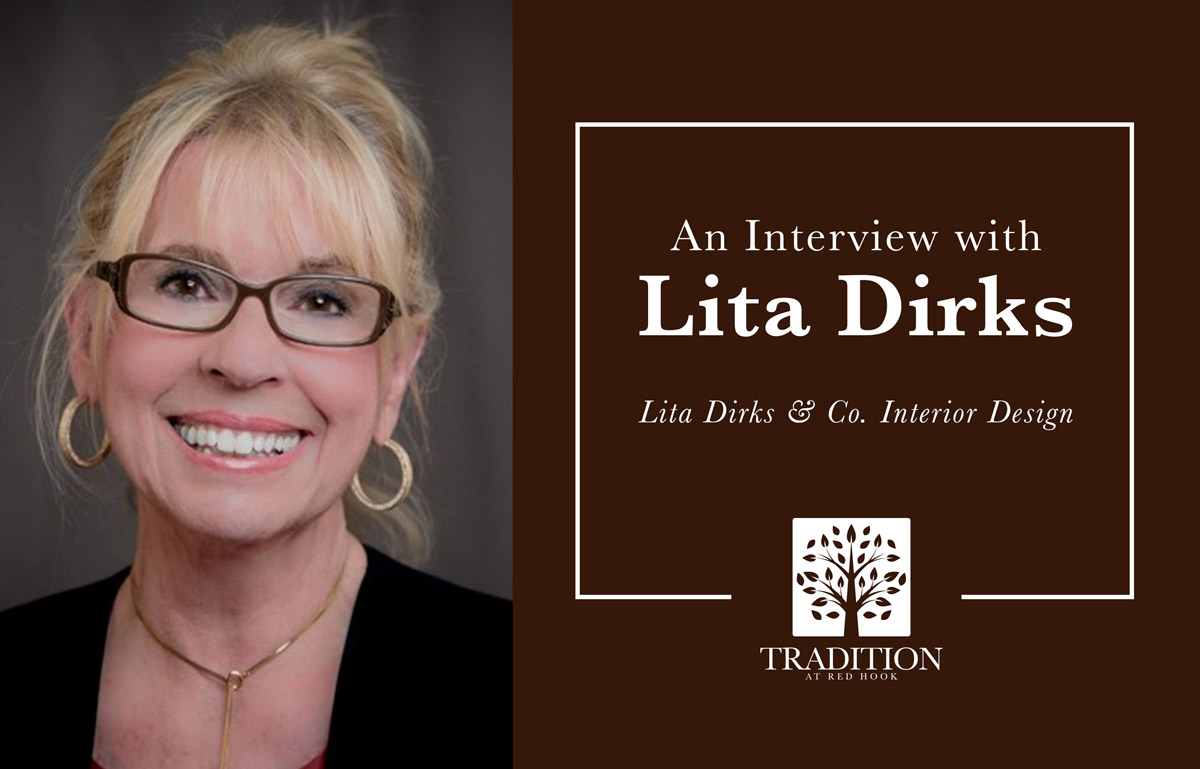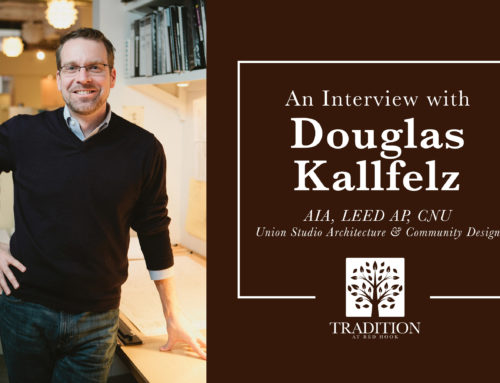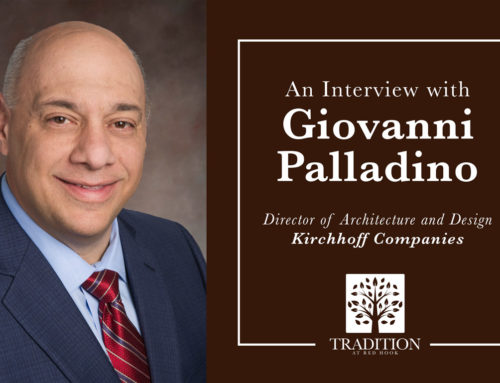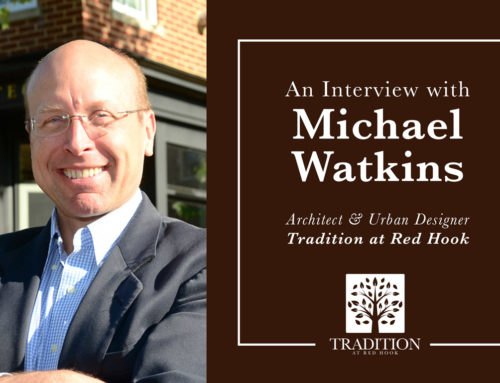Nationally renowned Lita Dirks brings more than her award-winning talent as an interior designer to various initiatives; she brings a genuine desire to evoke a feeling of connectedness for all who inhabit the homes she masterfully designs. When she was referred by an industry colleague to create designs for the model homes at Tradition at Red Hook, Lita enthusiastically embraced the opportunity for a number of reasons.
Read more:
What excites you about the Traditional Neighborhood Development concept?
Community and neighborhood. The gathering of people and the idea of really bringing a spirit of community to that little portion of the world. We’re all spread out so much; many people deal with long travel times to work, and any opportunity to connect home with community helps people engage with one another. I think it brings people a little bit of peace, comfort, and serenity when they get to come home to the haven that is their neighborhood. The Traditional Neighborhood Concept (TND) is wonderful, and I think Tradition at Red Hook is so charming; it stayed very much in keeping with how that area has been for many years. There’s a comfortable feeling in that area, with little streets and shops that stay true to their history. I think Tradition at Red Hook builds on that feel; it’s been constructed to honor history and a world people have loved and have wanted to get back to, while having a modern-day feel.
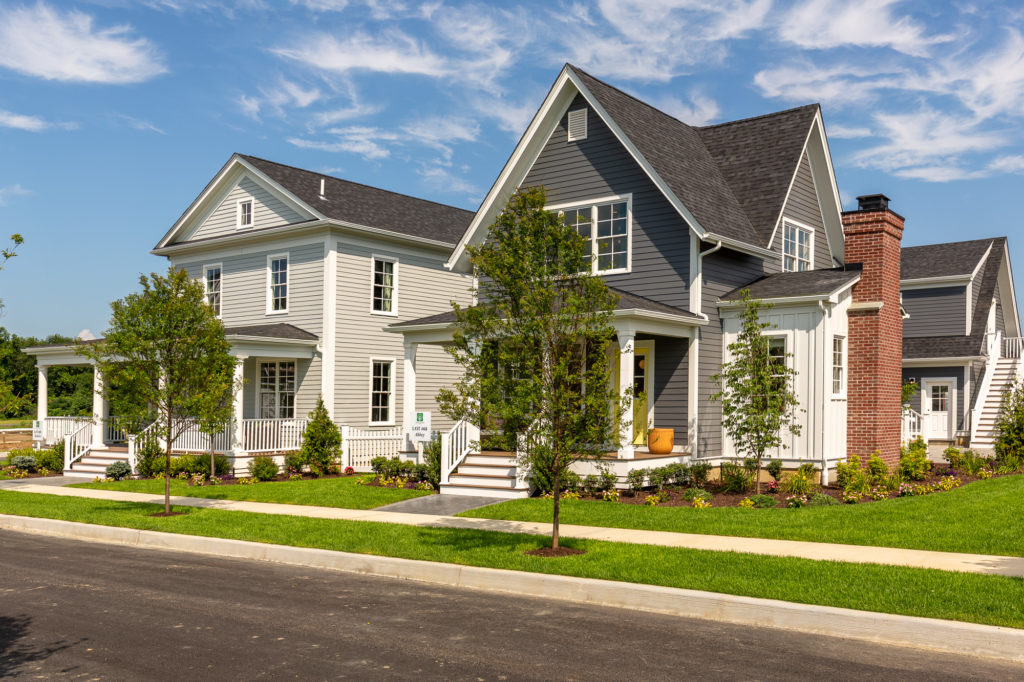
Photo by: Alon Koppel Photography
Can you comment on the synergistic relationship between architecture, urban planning and interior design?
When we were brought in to work on Tradition at Red Hook, it was early enough that we were asked to look at floor plans, which was so great. We did a lot of collaborating – communicating back and forth with the builder, developer, and architect to make sure that the rooms would furnish well, that there would be enough space for people to hang their drapery, and that the connections between rooms were efficient, useful, and that you could move well from one space into another. The synergy that I felt was very positive on the architectural side, on the builder’s side, and with the whole team. We all shared ideas and evaluated ideas together. No idea or question by anyone was ever dismissed – in fact, it was encouraged. There was respect between all of us. Everything was really so positive, and that’s not always the case!
What is it like to work on a neighborhood that symbolizes the past, but is perfect for the modern-day homeowner?
I think it’s real and it’s wonderful. We’re not historians, none of us, and we’re not trying to rebuild the past. Homeowners of the past had different needs and expectations. As the world turns, so to speak…different things have become more important in homes. The way we live has transformed since the beginning of history. Housing always needs to respond to the needs of today. I love the word respect when I think about this; Tradition at Red Hook meets the needs and dreams of today, but respects much of the beauty and tradition of the past. Bringing both together helps to create that truly new traditional neighborhood.
What inspired your various designs for Tradition at Red Hook?
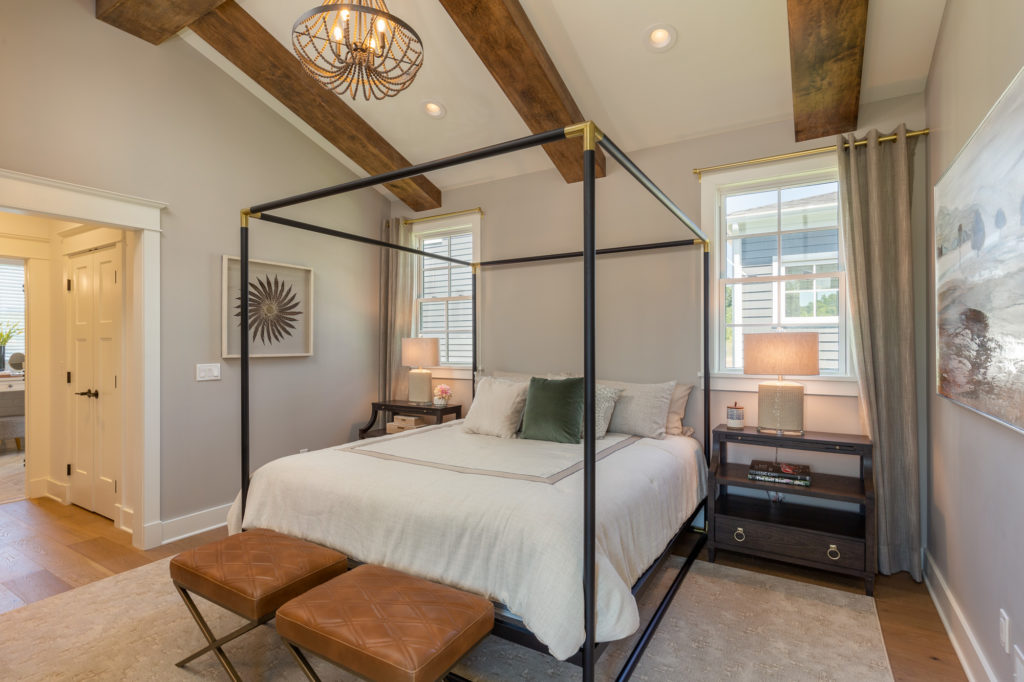
Photo by: Alon Koppel Photography
I was inspired by our conversations as soon as we started reviewing the floor plans. A vision was defined early on by the type of living we hoped to capture with each design. For the single-family home, we felt that a transitional kind of design would work. We wanted it to be like a modern farmhouse with warm woods and many textural elements and figured it should live comfortably. Additionally, we wanted it to be as rich in the touching on history as possible, while incorporating newer color palettes and materials found in todays’ market. We used a wonderful base white color and tons of neutrals with accents of soft to deep rich greens plus touches of tan leathers and black metals. Mixing all of that together truly helped to capture the ideal single-family home lifestyle we hoped to create.
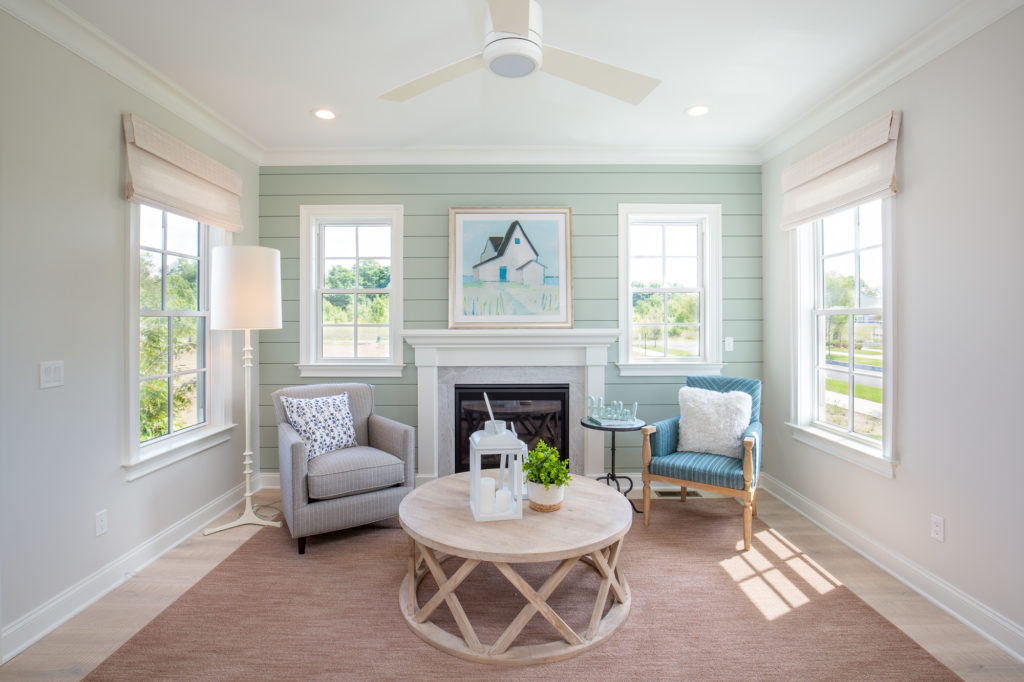
Photo by: Alon Koppel Photography
Then when we came to the cottage home, with the spaces and the way they worked and the charming fireplace in the front room we brought in classic, traditional touches mixed in with a very light and airy cottage style. We wanted it to create an experience similar to walking into an Anthropologie kind of store, where you see textures and beautiful hand-woven fabrics and materials. We wanted it to showcase bits of the old world with some antiques or memorable artisan collectibles, mixed with the world of today, to create a really comfortable cottage. The artisan materials mixed against a very crisp, white background keep the home bright and charming. We also brought in greys, pinks, yellows, and soft blues. This array of beautiful colors along with natural woods and rattans evoked a comfortable fun vibe. That house really puts a smile on your face.
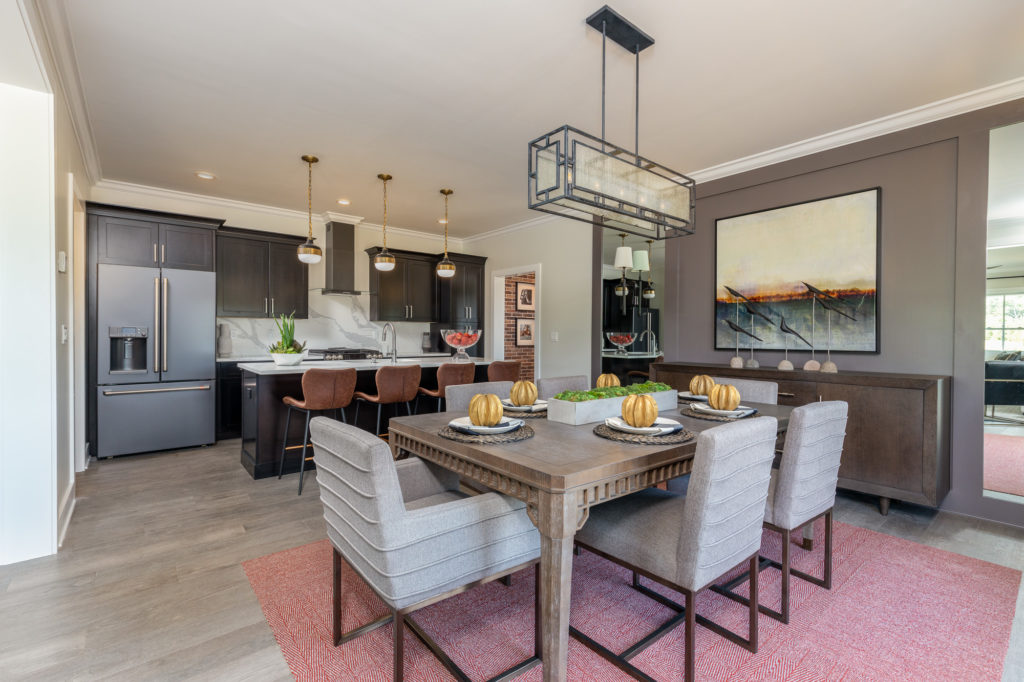
Photo by: Alon Koppel Photography
With the townhome, we thought with the brick on the wall, we’d create a more modern, more clean-lined yet comfortable feel. More like what you might reference to a room-and-board kind of shopping experience where you have transitional pieces but on that much cleaner kind of line. It’s modern but it’s not Mid-century modern or Italian modern or Swedish modern; just clean, transitional lines mixed with a softly urban-suburban kind of touch. It’s perfect for people who appreciate the urban art scene but want to live in the serenity of the Hudson Valley.
Tell me about your creative process and what keeps you inspired?
I’ve been doing this for years. I truly love what I do. I love the idea of working with builders and trying to figure out the most perfect floor plan and designs for a home and a space that help people work in an organized, efficient manner while truly loving where they are. I love building on the good bones of a good solid home. When we can help with that and then start to add feeling, that’s a wonderful thing. I’m in the perfect industry because as a national firm, we get a chance to walk in the shoes of the people in different areas of the country. We get a chance to really try to think and feel the way they might think and feel. We ask ourselves questions like: when they touch that doorknob or open the door, what do they see? How do they feel? Where do they want to go next? What excites their eye? What’s the next thing they see? Sometimes it’s a window, sometimes it’s a piece of art, sometimes a wonderful color in a chair. The feelings people get as they move through spaces, that’s what inspires me. Oftentimes people worry so much if a chair is right, and I think you’ve got to look at the whole picture. I say if you love it, get it because more than likely you’re constantly mixing things together that you like which means they’ll probably go well together. It’s a feeling. You must follow that feeling. And you think about how the walls back up pieces of furniture. I think that when people put furniture into a space, whether it’s a buyer of a home or people who are trying to do the interior design in a space, they worry so much about what the furniture will be. But you must ask: what does the wall look like? What are the shapes around you? And then you start building in with furniture, texture, and color. I love solving those problems and putting the puzzle together.
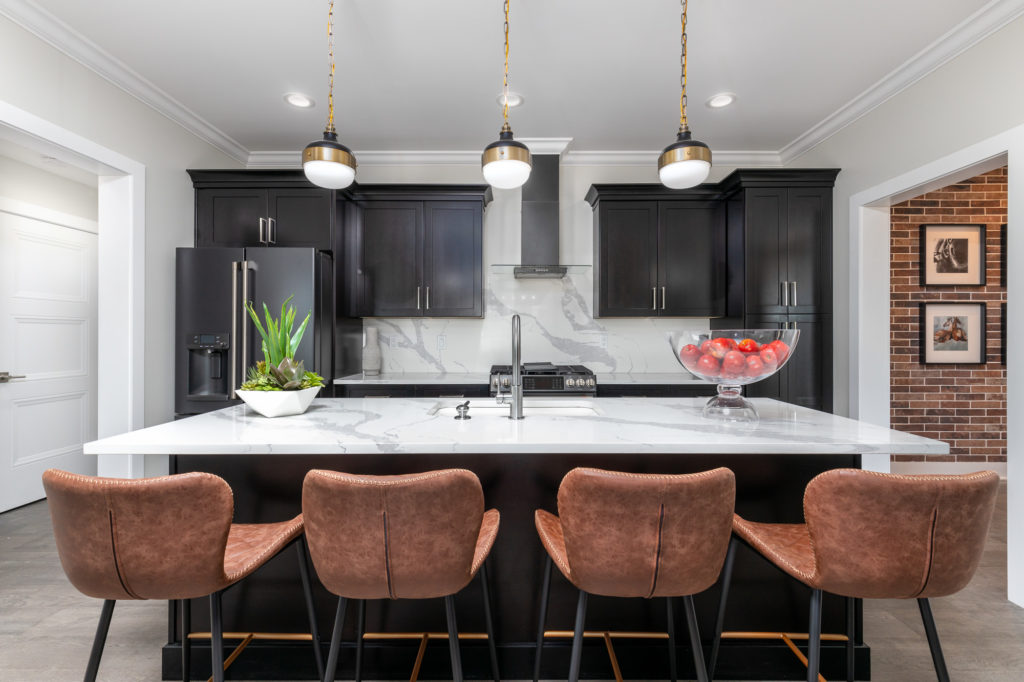
Photo by: Alon Koppel Photography
If you were moving to Tradition, which home would you choose and why?
What a great question! Ideally, I’d like a little bit of each home. I love the way the single-family floor plan works, and honestly, I think for my lifestyle that would be my favorite. But I also love the way we ended up texturizing in the townhome with the brick and some of the colors; I love the feeling of that space and the natural material of the brick. Oh, and the cottage…I love the details we incorporated accessorizing and the craftiness of all the artisan things; it’s a really fun space. So, I’d choose something from each at Tradition at Red Hook.
Other thoughts about Tradition at Red Hook?
I think this neighborhood truly captures a sense of community and the spirit of the Hudson Valley. They bring the 21st century to a beautiful historic space. Both Joe Bonura and Joe Kirchhoff are passionate about their work. They’re not afraid of creating a dream and going for it. It’s very positive because if you look at other new home communities, they are often just a repeat of past communities. But in this case, Joe and Joe paid close attention to their location, showed respect for the community that was already there, and you can tell people are important to them. It came across to all of us who were lucky enough to be on their team; you could see it in the way they work and the way they treat us. Their leadership and success come from real passion and heart. It’s nice to have success on top of that, but it’s clear the driving force was to create something special. I applaud them. I am really happy we were able to be a part of it.

